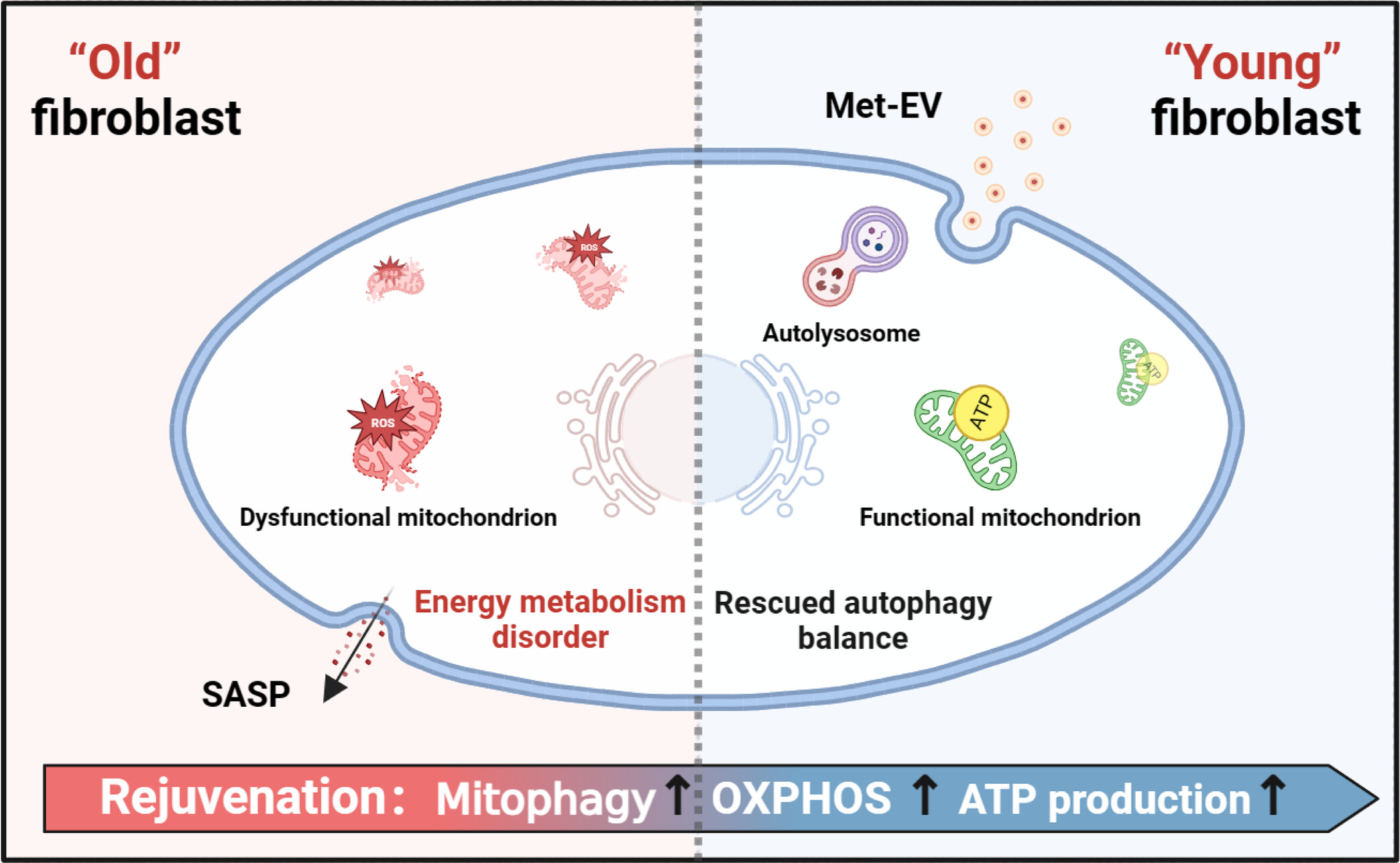
Metformin-Engineered Extracellular Vesicles: Strategic Role in Aging Skin Repair

The research identified significant energy metabolic alterations in the aging skin of both humans and mice. These changes underscore the critical role of ATP metabolism in cell activation and tissue repair in aged individuals. The study demonstrated that Metformin-Engineered Extracellular Vesicles (Met-EV) could significantly enhance skin repair in aged mice. This was achieved by ameliorating cellular senescence and restoring cellular functions. Treatment with Met-EV led to a remodeling of ATP metabolism, characterized by reduced glycolysis and enhanced oxidative phosphorylation (OXPHOS).
Met-EV treatment also rescued mitochondria dysfunctions and mitigated mitophagy suppressions induced by senescence. This indicates a crucial role for Met-EV in remodeling mitochondrial functions through mitophagy, ensuring adequate ATP production for aged tissue repair.
The findings of this study reveal the underlying mechanism of SnCs rejuvenation by extracellular vesicles (EVs) and position disturbed energy metabolism as a pivotal therapeutic target for addressing age-related defects.
Join Skin Ageing & Challenges on November 5-6, 2024 at Corinthia Palace Malta to know more about extracellular vesicles’ role in skin aging and wound healing.
Photo credits: Yu Zhuang et al., Energy metabolism as therapeutic target for aged wound repair by engineered extracellular vesicle. Sci. Adv. 10, eadl0372 (2024).
Did you like the news ? Please share it with your circle.